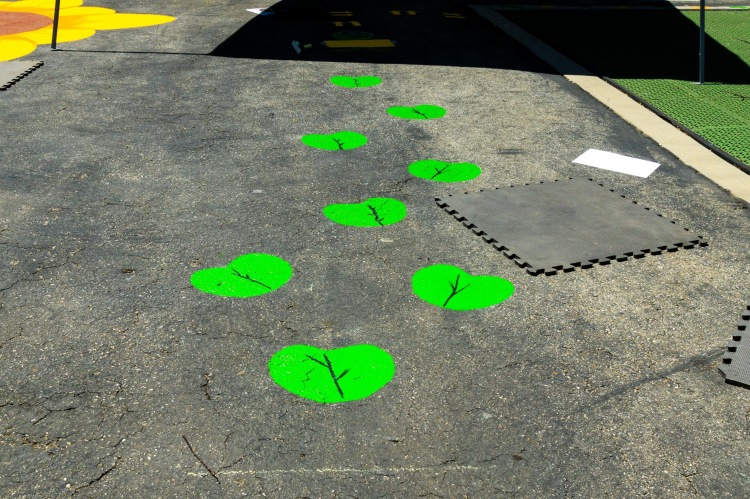
Over the summer, our board member Christine developed a Sensory Path on the playground at Buford Elementary School. The purpose of a Sensory Path is to allow students to use exercise and motion to release stress and cope with various emotional states.
Christine worked with DaVinci High School students to design and map out the course based on the available space and the flow they felt best met the needs of these elementary-aged students. Along with student volunteers and LumenSparQ board members, Christine and her team used bright colors and inviting shapes and characters to bring this design to life.












Christine writes, “The sensory paths give students a chance to spend a few minutes of their school day walking, jumping, bouncing, and ‘pushing themselves through their distractions.‘ Experts say sensory paths can also help students develop motor skills, including balance, hand-eye coordination, and spatial awareness.
“Our program, the Juntos Wellness Program, first embraced the idea of a Sensory Path to support students who were sent to the office or self-referred and needed a space to ‘motor out big feelings’ before they were able to talk about them. In the past, counselors might walk with a student or give them a motor activity to do with their hands to help calm their bodies and minds.
“A Sensory Path allows students to not only motor their big feelings during challenging moments but also enable them to practice those skills ahead of time. Ideally, a sensory regulation course is used often. Teachers take time every few days to walk through the course, allowing students to practice movement, breathing, and other regulation tools. This practice creates muscle memory and can make it easier for students to use regulation tools in challenging moments. “
To learn more about Sensory Paths, see the following resources:
Here’s Why More Schools Should Explore Sensory Paths
Everything You Need to Know About Setting up a School Sensory Path
10 Station Sensory-Motor Walk Activities for Schools

